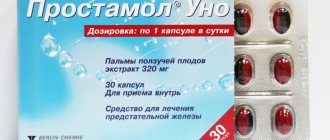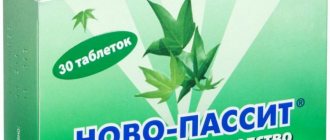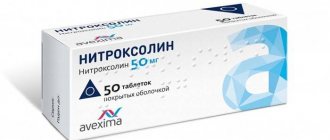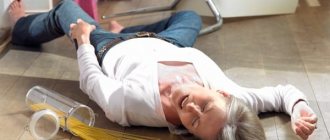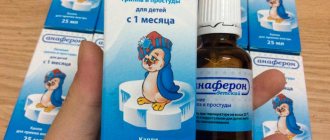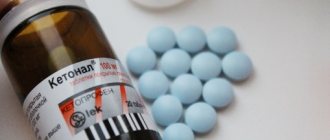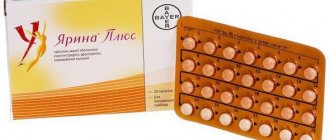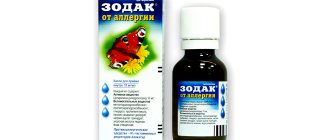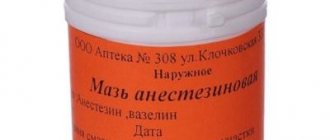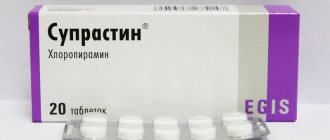Compound
ginkgo biloba leaf extract as an active substance .
The core of the tablets includes such auxiliary components as lactose monohydrate, corn starch, talc, MCC, colloidal silicon dioxide, magnesium stearate. The shell contains hypromellose, macrogol 6000, red iron oxide, macrogol 400, titanium dioxide. Additional components of the solution: sodium saccharinate, lemon flavor, water, orange flavor, ethanol 96%.
Additional components
In addition to the active ingredient, Tanakan tablets contain auxiliary ingredients. Their content in relation to the extract is insignificant, but this part should also be paid attention to. Among them:
- silicon dioxide in colloidal form;
- corn starch;
- lactose in the form of monohydrate;
- stearate;
- talc;
- microcrystalline cellulose.
Depending on the release form, the composition of additional ingredients may differ. Thus, the liquid solution of the drug “Tanakan” (pharmacists’ reviews and instructions confirm this) contains the following additional substances:
- orange and lemon flavors;
- purified water;
- 96% ethanol;
- sodium saccharinate.
Pharmacodynamics and pharmacokinetics
This medicine is a standardized and titrated product with a herbal composition. Its action is based on the influence on metabolic processes in cells, vasomotor reactions of blood vessels and rheological properties of blood .
Tanakan helps enrich the brain with oxygen and glucose, normalizes microcirculation, tone of arteries and veins. In addition, it improves blood flow, has an inhibitory effect on platelet activating factor , and prevents erythrocyte aggregation .
The drug also normalizes metabolism , prevents the formation of free radicals and fat peroxidation of cell membranes, and has an antihypoxic effect on tissues. The drug affects the release, catabolism and reuptake of neurotransmitters , as well as the ability to bind to membrane receptors .
The bioavailability of ginkgolides and bilobalides is 80-90%. The maximum concentration is reached after approximately 1-2 hours. Half-life is 4-10 hours. The active substance does not disintegrate and is almost completely excreted in the urine. A small amount is in the feces.
About the drug
This drug is distinguished by properties that regulate the functioning of blood vessels, it improves their tone. The components of the drug have anti-edematous and antioxidant effects. Interestingly, today it is used with great success in sixty countries around the world. It contains not just one component, but a whole complex of them; we’ll talk about this later.
Indications for use of Tanakan
Indications for use of Tanakan are as follows:
- treatment of cognitive disorders in the elderly (except dementia , vascular disorders , Parkinson's disease metabolic disorders );
- symptomatic treatment of tinnitus;
- vertigo therapy ;
- intermittent claudication in the case of chronic obliterating arteriopathy of the lower extremities;
- dizziness and coordination disorders of vascular origin ;
- disease and syndrome .
Use in old age
In what cases is it advisable to use Tanakan in old age? Stroke, along with chronic forms of cerebral vascular insufficiency, are the most common neurological diseases in the older age group of patients. Cerebral vascular insufficiency is one of the most common factors of disability among older people. Along with this, the treatment of such deviations and pathologies remains a very difficult problem in modern society.
Obviously, the doctor’s first priority is to treat the underlying vascular disease, which may include atherosclerosis of the cerebral circulatory system, hypertension, as well as thrombosis and thromboembolism. As part of therapy today, doctors widely use drugs that affect neuronal metabolism and cerebral microcirculation. Among these, “Tanakan” is considered very promising in the field of pharmaceuticals and medicine. It is famous for its vasoactive and metabolic effects.
In addition to the objective positive effect on cognitive function in patients suffering from vascular dementia, the use of Tanakan in old age contributes to a significant improvement in the general well-being of older people. After treatment, as a rule, the severity of subjective symptoms in the form of headaches, dizziness, noise in the head, fatigue, etc., decreases.
Since such manifestations are often associated with moderate or mild depressive disorder, which is very typical for older people, the observation of positive dynamics of subjective symptoms makes it possible to talk about the mild antidepressant property of Tanakan. It is worth noting that treatment with this drug in old age is selected purely individually, depending on the degree of manifestation of pathological changes in the body.
Contraindications
The use of the medicine is contraindicated in the following cases:
- exacerbation of erosive gastritis ;
- acute cerebrovascular accidents;
- decreased blood clotting ;
- children's age (up to 18 years);
- lactation;
- pregnancy;
- exacerbation of gastric and duodenal ulcers ;
- acute myocardial infarction;
- hypersensitivity to the components of the drug.
The description of the tablets also indicates that they should not be taken in case of congenital galactosemia , lactose intolerance lactase deficiency , or galactose malabsorption syndrome .
With caution, if there are indications for the use of Tanakan, the solution is used in cases of alcoholism , head injury , liver and brain diseases.
Tablets "Tanakan": for what disease should they be taken?
The presented drug is suitable for use in patients with the following pathologies and conditions:
- Cerebrovascular accidents of various origins (with the exception of senile dementia and Alzheimer's disease).
- Deterioration of visual acuity.
- Vision problems of vascular origin.
- Development of obliterating endarteritis.
- The appearance of disorders in coordination of movements.
- The occurrence of hearing impairment.
- The presence of dizziness due to vascular pathologies.
- The presence of consequences of cranial and brain injuries.
- Conditions after a stroke (impaired memory, sleep and attention).
- The development of asthenic conditions that are caused by trauma or depression of a psychogenic or neurotic nature.
- The occurrence of Raynaud's disease.
And all this is treated with Tanakan tablets. Your doctor will tell you what disease you should take them for.
Side effects
In rare cases, the following side effects are observed when taking the medicine:
- Gastrointestinal tract: digestive disorders, diarrhea , nausea, pain in the abdominal area, vomiting;
- skin: skin inflammation, swelling , itching , redness, rash, eczema ;
- immune system: hypersensitivity reactions, including urticaria , angioedema , shortness of breath ;
- CNS: headache , syncope , dizziness .
If side effects occur, you must stop taking the drug and consult a specialist.
Side effects of Tanakan
In most patients, the medicine does not cause unwanted reactions. Occasionally, during therapy, headaches, nervous agitation, worsening sleep, tachycardia, digestive disorders, and nausea are possible. Signs of an allergy to the drug may include swelling of the mucous membranes, itching, and urticaria.
The risk of side effects increases when combined with antibiotics, antimycotic drugs, antidepressants, and drugs to lower sugar levels.
In such cases, it is recommended to stop taking Tanakan and discuss the situation with your doctor.
Instructions for use of Tanakan (Method and dosage)
The drug is intended for internal use in adult patients. This should be done 3 times a day during meals.
For patients taking Tanakan tablets, the instructions for use advise taking them with ½ glass of water.
The solution is diluted in half a glass of water. When using it, you must use the dispenser pipette .
Therapy continues for at least 3 months. The course should be extended and re-treatment should be carried out only after consultation with a doctor; only he knows what the medicine can help with in each specific case.
Instructions for use of Tanakan for children inform that this drug should not be given to patients under 18 years of age.
"Tanakan" for children
This medicine is contraindicated before adulthood, but in rare cases doctors may prescribe it. Moreover, it is sometimes prescribed even to infants who suffer from pathologies of cerebral circulation, intracranial high blood pressure or dysfunction of the autonomic system. The use of the drug in question in pediatrics is possible only for individual indications.
Immediately before the appointment, the child must undergo a neurological examination, which includes Doppler ultrasound of the brain and neurosonography. The medication should only be taken under regular medical supervision. The dosage of Tanakan, as well as the duration of its administration, in pediatric practice is determined individually, which directly depends on the severity of the pathology and the age of the child.
Interaction
Interaction with drugs metabolized by the CYP3A4 isoenzyme and having a low therapeutic index should be allowed with caution.
Tanakan should not be used in combination with drugs including acetylsalicylic acid , drugs that reduce blood clotting , and anticoagulants .
Combination with cephalosporin antibiotics , chloramphenicol , thiazide diuretics , oral hypoglycemic agents , 5-nitroimidazole derivatives , cytostatics , tranquilizers , Gentamicin , Disulfiram , anticonvulsants , antifungal drugs, Ketoconazole , tricyclic antidepressants can cause hyperthermia , vomiting, rapid heartbeat.
Interaction of Tanakan with other medications
This drug in tablets can be used with many pharmaceutical drugs, however, its use should not be combined with Warfarin or Aspirin, since such an interaction may cause an increased risk of bleeding. If taken with alcohol, it is worth considering the possibility of a reaction to alcohol (in the form of rapid heartbeat and redness of the skin), and therefore it is better to avoid such a combination.
It is not advisable to use the product simultaneously with medications such as Disulfiram along with Cefomandol, Latamoxef, Cefoperazone (cephalosporin antibiotic), Chloramphenicol (phenicol antibacterial drug); “Chlorpropamide”, “Glipizide”, “Glibenclamide”, “Tolbutamide”, “Griseofulvin” (an antifungal agent), “Ketoconazole”, “Procarbazine”, “Metronidazole” and “Trichopol”.
Tanakan's analogs
Level 4 ATX code matches:
Ginos
Akatinol Memantine
Intellan
Noodzheron
Ginkgo biloba
Bilobil
Memantine
Memoplant
Ginkum
Vitrum Memory
Namenda
Analogues of Tanakan with the same active substance and release form:
- Gingium;
- Ginkofar;
- Ginkofar Forte;
- Ginos;
- Memoplant;
- Memoplant Forte.
Similar drugs with a different release form:
- Bilobil;
- Bilobil Intens;
- Bilobil Forte;
- Giloba;
- Ginkgo Biloba-Astrapharm;
- Ginkgocaps-M;
- Memorin.
All Tanakan analogues have their own application characteristics, so they cannot be replaced at your own discretion, without consulting a doctor. This is a rather expensive drug, and patients are often interested in similar drugs. The price of analogues may vary. Ginkofar , Memoplant , Memorin , Ginkgo Biloba-Astrapharm have a lower cost .
Memoplant or Tanakan - which is better?
Many patients are interested in the question: Memoplant or Tanakan - which is better? Experts say that it is impossible to answer this question unambiguously, since both drugs are almost identical. They mainly differ by manufacturer. Memoplant is produced by a German company, and Tanakan is produced by a French company.
Pharmacology of the drug "Tanakan"
The main active ingredient in the drug is the extract of “silver apricot” (in medicine, its name in Latin is better known - Ginkgo biloba). This tree grows in Japan and eastern China and is the only one of its kind to survive the Ice Age. Previously, it was distributed throughout the entire Earth and had many types. Its history stretches back to the Cretaceous period, but now there is only one species left that has survived in the East.
It is thanks to this component that the drug Tanakan receives positive reviews from many patients to whom it was prescribed. The medication is available in the form of tablets (in blister packs of 15 pieces) and solution (in a 30 ml bottle).
Reviews about Tanakan
Patients leave a variety of reviews about Tanakan on forums. Mostly they write that the tablets or solution helped. However, there are reviews of Tanakan that report side effects. Mostly people write about headaches and dizziness .
Reviews from doctors about Tanakan are also mostly positive. Neurologists often recommend this drug to their patients for appropriate indications.
In addition, there are reviews on the Internet that report that Tanakan was prescribed to children for attention deficit disorder . They claim that the initial use of this remedy gave slight positive changes, and with a second course a clear positive effect is noted.
Which is better: Tanakan or Nootropil
Nootropil, unlike Tanakan, is a completely synthetic drug. The mechanism of action of the two drugs is similar in terms of their effect on platelet formation, erythrocyte aggregation and the elasticity of vascular walls.
Side effects from using Nootropil are identical to the body’s negative responses to taking Tanakan. Considering the similarity of the mechanism of interaction on the hematopoietic system and blood vessels, it makes sense to replace one drug with another if an adverse reaction occurs during therapy. Due to the fact that the active ingredients of the drugs are different: in Tanakan these are extracts of ginkgo biloba leaves, and in Nootropil - piracetam, intolerance to piracetam may be a reason to switch to Tanakan.
Tankan price, where to buy
The price of Tankan in the form of a solution is on average 550 rubles. Patients who believe that the drug is quite expensive often ask pharmacies how much any of the analogs of this drug costs. Many people choose cheaper medicine.
The price of Tanakan tablets (30 pieces per package) is about 600 rubles. Tablets of 90 pieces per package are sold for about 1,500 rubles.
The drug is available in many pharmacies, it can be bought in Moscow and other cities of Russia.
The average price of Tanakan in the form of a solution in Ukraine is 240 hryvnia. Tablets of 30 pieces per package are sold for approximately 260 hryvnia, and 90 pieces per package for 720 hryvnia.
- Online pharmacies in RussiaRussia
- Online pharmacies in UkraineUkraine
- Online pharmacies in KazakhstanKazakhstan
ZdravCity
- Tanakan tablets p.p.o.
40 mg 90 pcs. Bofur Ipsen Industry RUB 1,484 order - Tanakan tablets p.p.o. 40 mg 30 pcs. Bofur Ipsen Industry
606 rub. order
Pharmacy Dialogue
- Tanakan tablets 40 mg No. 90Beaufour Ipsen Industrie
RUB 1,506 order
- Tanakan bottle 30mlBeaufour Ipsen Industrie
RUR 574 order
- Tanakan tablets 40 mg No. 30Beaufour Ipsen Industrie
RUR 645 order
show more
Pharmacy24
- Tanakan 30 ml solution
197 UAH. order - Tanakan 40 mg N30 tablets Beaufour-Ipsen Industrie, France
189 UAH order
- Tanakan 40 mg N90 tablets Beaufour-Ipsen Industrie, France
527 UAH order
PaniPharmacy
- Tanakan tablets Tanakan tablets. p/o 40 mg No. 90 France, Beaufour Ipsen Industrie
559 UAH. order
- Tanakan tablets Tanakan tablets. p/o 40 mg No. 30 France, Beaufour Ipsen Industrie
214 UAH order
- Tanakan liquid Tanakan solution 40 mg/ml 30 ml France, Beaufour Ipsen Industrie
224 UAH order
show more
Reviews
People write in the comments that this medicine is tolerated by the body quite well, without causing significant adverse reactions. As a rule, patients notice a positive effect within three to four weeks after starting to take the drug.
It is worth saying that older people report improved memory, a decrease in signs of nervousness, and in addition, the absence or reduction in the number of episodes of dizziness and headaches. Among other things, patients in reviews say that thanks to this pharmaceutical product they experience normalization of vision and blood pressure.
But consumers are not satisfied with the inflated price of the medicine. In addition, among the numerous comments one can find complaints about the appearance of certain disorders of the digestive system during the use of this drug for treatment. But in general, people are satisfied and consider Tanakan tablets very effective. It is now known what disease to take them for.
Can it be replaced?
The drug has a fairly large number of similar drugs, among which there are both drugs with the same active substance and with a completely different composition. What can replace “Tanakan”? Analogues (reviews from practicing doctors confirm this) are quite effective and are used along with widely advertised ones. Among the most popular alternatives are:
- “Armadin” is a drug for intramuscular or intravenous injection, used for vegetative-vascular dystonia, acute cerebral circulatory disorders, impaired cognitive genesis, neurosis-like conditions, heart failure, as well as in complex therapy of myocardial infarction, unstable angina, etc.;
- "Benziclan" - tablets for the treatment of diseases of the circulatory system, peptic ulcers of the stomach and intestinal tract, has indications for the treatment of renal colic and spasms in the genitourinary system;
- “Neuroximet” is also the main active ingredient of Ginkgo biloba, so the effect is generally similar to “Tanakan”, and is available in capsule form;
- “Entrop” is available in the form of tablets and is designed to help in the treatment of obesity, depression of various etiologies and severity, diseases of the central nervous system, mental disorders, neuroses, chronic alcoholism, etc.;
- “Resveratrol 40” - tablets, used for various pathologies of the circulatory system, for the prevention of Alzheimer’s and Parkinson’s diseases (Tanakan, reviews directly indicate, in these cases it is not recommended), improving brain function in all manifestations;
- "Omaron" - tablets for the treatment of diseases of the central nervous system caused by cerebral circulation disorders, ischemic and hemorrhagic strokes, consequences of traumatic brain injuries, Meniere's disease and syndrome, etc.
The drugs described above are not all analogues of Tanakan. Depending on the price, active ingredients and indications for use, you can find a completely adequate replacement for it. However, before replacing a prescribed drug with an alternative one, regardless of the reasons for such a choice, it is necessary to additionally consult with your doctor to ensure that the analogue meets the needs of the body.
Instructions:
Clinical and pharmacological group
01.072 (Phytopreparation that improves cerebral and peripheral blood circulation)
Release form, composition and packaging
The tablets are brick-red, round, biconvex; when broken, light brown in color, with a specific odor.
| 1 tab. | |
| ginkgo biloba extract dry standardized (EGb 761®) | 40 mg, |
| incl. heterosides | 24% |
| ginkgolide-bilobalide | 6% |
Excipients: lactose monohydrate, microcrystalline cellulose, corn starch, colloidal silicon dioxide, talc, magnesium stearate.
Shell composition: hypromellose, macrogol 400, macrogol 6000, titanium dioxide, red iron dioxide.
15 pcs. - blisters (2) - cardboard packs. 15 pcs. - blisters (6) - cardboard packs.
◊ The solution for oral administration is brownish-orange in color, with a characteristic odor.
| 100 ml | |
| Ginkgo biloba leaf extract (EGb 761®) | 4 g, |
| incl. flavonol glycosides | 24% |
| ginkgolide-bilobalide | 6% |
Excipients: sodium saccharinate - 500 mg, orange flavor - 750 µl, lemon flavor - 750 µl, ethanol 96% - 59 ml, purified water - up to 100 ml.
30 ml - dark glass bottles (1) complete with a dispenser pipette (1 ml capacity) - cardboard packs.
pharmachologic effect
A standardized and titrated preparation of plant origin, the effect of which is due to the influence on metabolic processes in cells, the rheological properties of blood, as well as on the vasomotor reactions of blood vessels.
The drug improves the supply of oxygen and glucose to the brain. Normalizes the tone of arteries and veins, improves microcirculation. Helps improve blood flow, prevents red blood cell aggregation. Has an inhibitory effect on platelet activating factor.
Improves metabolic processes and has an antihypoxic effect on tissues. Prevents the formation of free radicals and lipid peroxidation of cell membranes. Affects the release, reuptake and catabolism of neurotransmitters (norepinephrine, acetylcholine, dopamine, serotonin) and their ability to bind to membrane receptors.
Pharmacokinetics
Ginkgolides A and B and bilobalides have an oral bioavailability of 80% to 90%. Cmax is reached within 1-2 hours; T1/2 ranges from 4 hours (ginkgolide A and bilobalide) to 10 hours (ginkgolide B). The main route of elimination is the kidneys.
Dosage
Prescribe 40 mg (1 tablet or 1 ml of oral solution) 3 times a day with meals.
Taken orally. The tablet should be taken with half a glass of water, the oral solution should be dissolved in half a glass of water. When taking the drug in the form of an oral solution, use the supplied dispenser pipette (1 dose = 1 ml of solution).
The minimum course of treatment is 3-6 months.
Overdose
Currently, there are no known cases of overdose of Tanakan®.
Drug interactions
In clinical studies with EGb 761, both inhibition and induction of cytochrome P450 isoenzymes were detected. When EGb 761 was co-administered with midazolam, midazolam levels were altered, presumably due to an effect on CYP3A4. Therefore, caution should be exercised when co-administering EGb 761 and drugs metabolized by the CYP3A4 isoenzyme.
With the simultaneous use of tanakan in the form of a solution for oral administration with antibiotics of the cephalosporins group (cephamamanol, cephireson, Latamomsef), gentamycin, chloramphenicol, disulfiram, thiazide diuretics, anticonvulsant drugs, oral hypoglycemic drugs (chlorpropamide, glibenclamide, glipiside, and glypiside, bushbrisis, and bushwood. Tamid, Metformin (possibly development lactic acidosis)), antifungal drugs (griseofulvin), 5-nitroimidazole derivatives (metronidazole, ornidazole, secnidazole, tinidazole), cytostatics (procarbazine), tricyclic antidepressants, tranquilizers, reactions such as hyperthermia, hyperemia of the skin, vomiting, increased heart rate may occur, since 1 dose of Tanakan in the form of an oral solution contains 450 mg of ethyl alcohol.
The drug should not be used by patients systematically using acetylsalicylic acid or warfarin.
Use during pregnancy and lactation
The use of Tanakan® is contraindicated during pregnancy and lactation due to the lack of clinical data.
Side effects
From the side of the central nervous system: infrequently (≥ 0.1% - < 1%) - headache, dizziness.
From the digestive system: infrequently (≥ 0.1% - < 1%) - nausea, abdominal pain; with unknown frequency - dyspepsia, diarrhea.
Dermatological reactions: uncommon (≥ 0.1% - < 1%) - rash, itching, eczema.
Allergic reactions: with unknown frequency - redness, skin rash, swelling, itching, urticaria.
From the blood coagulation system: with unknown frequency - decreased blood clotting and the possibility of bleeding (with long-term use).
Storage conditions and periods
The drug should be stored out of the reach of children at a temperature not exceeding 25°C. The shelf life of the tablets is 4 years. The shelf life of the oral solution is 3 years.
Indications
- cognitive and neurosensory deficits of various origins (with the exception of Alzheimer's disease and dementia of various etiologies);
- intermittent claudication in chronic obliterating arteriopathy of the lower extremities;
- visual impairment of vascular origin, decreased visual acuity;
- hearing impairment, tinnitus, dizziness and coordination disorders mainly of vascular origin;
- Raynaud's disease and syndrome.
Contraindications
- pregnancy;
- lactation period (breastfeeding);
- hypersensitivity to any of the components of the drug.
For oral solution:
- erosive gastritis in the acute stage;
- peptic ulcer of the stomach and duodenum in the acute stage;
- acute cerebrovascular accidents;
- acute myocardial infarction;
- decreased blood clotting;
- age up to 18 years.
The solution should be prescribed with caution to patients with alcoholism, liver diseases, traumatic brain injuries and brain diseases, since the drug in the form of a solution contains 450 mg of ethyl alcohol per 1 dose (1 dose).
special instructions
Improvement in the condition appears 1 month after the start of treatment.
Since Tanakan® in tablet form contains lactose, it should not be prescribed to patients with congenital galactosemia, glucose or galactose malabsorption syndrome, or lactase deficiency.
One single dose of the oral solution contains 450 mg of ethyl alcohol (57% v/v), the maximum daily dose is 1.35 g of ethyl alcohol.
Impact on the ability to drive vehicles and operate machinery
While taking the drug, it is not recommended to perform potentially hazardous activities that require increased concentration and speed of psychomotor reactions (including driving vehicles, working with moving mechanisms), because the drug may cause dizziness and the solution contains ethyl alcohol.
Conditions for dispensing from pharmacies
The tablets are available with a prescription.
The oral solution is approved for use as an over-the-counter product.
Analogs and other information for the patient
Since the cost of the medicine is quite high, many are interested in whether there are analogues of cheaper drugs. There are a number of drugs based on the same substance or other drugs. How much they cost, composition and names - the information is in the table.
| A drug | Compound | Price, rubles |
| Ginkum | Ginkgo biloba | 340 |
| Bilobil | Ginkgo biloba | 350 |
| Cavinton | Vinpocetine | 270 |
| Mexidol | Ethylmethylhydroxypyridine succinate | 350 |
| Memoplant | Ginkgo biloba | 650 |
| Ginkgo biloba | Ginkgo biloba | 110 |
Side effects may include allergic reactions - rash, swelling, itching of the skin. A decrease in coagulability is possible due to a decrease in platelet aggregation. If the course is too long, there is a risk of bleeding. From the nervous system, headaches are possible, from the gastrointestinal tract - nausea, heartburn, belching, stomach pain. If there are side effects, you will have to refuse treatment and select a drug with another active substance from the group of angioprotectors.
"Tanakan" during pregnancy
The instructions for the drug "Tanakan" (reviews from doctors confirm this) indicate that its use is not recommended during pregnancy and breastfeeding due to the lack of proper laboratory tests. At the same time, the main active component of the drug is strictly forbidden to be used during pregnancy and breastfeeding.
Accordingly, “Tanakan” can be used only after childbirth and the child’s transition to independent feeding. If there is a need for further treatment at this time, you should select an analogue of the drug, the action of which will be based on other substances.
Tanakan
Active substance:
Ginkgo bilobae leaf extract (Ginkgo Bilobae foliorum extract)
Pharmgroup:
Angioprotectors and microcirculation correctors
Average price in pharmacies
| Name | Manufacturer | average price |
| Tanakan 0.04 n30 tablet p/film/casing | Bofur Ipsen Industry | 613.00 |
| Tanakan 0.04 n90 tablet p/film/casing | Bofur Ipsen Industry | 1500.00 |
| Tanakan 0.04/ml 30ml bottle solution | Bofur Ipsen Industry | 559.00 |
Analogs for the active substance:Bilobil Bilobil forte Vitrum Memory Gingium Ginkgo biloba Ginkgo biloba dry extract Ginkyo Ginkum Ginos Memoplant | Application area:Waardenburg syndrome Raynaud's disease Vertigo Vestibulopathy Vestibular vertigo Vestibular disorder Vestibular disorder Vestibular abnormalities Age-related vascular hearing loss Age-related vascular hearing loss Age-related vascular diseases Age-related changes in visual acuity Age-related hearing loss Hemodynamic defects of the right half of the heart Hemodynamic defect of the right half of the heart Dizziness Dizziness and nausea while traveling by transport Dizziness of labyrinthine origin Dizziness of labyrinthine origin Idiopathic hearing loss Ischemic angiopathy Ischemic hearing and balance impairment Cognitive impairment in degenerative and vascular diseases of the brain Cognitive impairment in neurotic disorders Cognitive disorder Cognitive disorders Cochlear neuritis Cochleo-vestibular disorder of ischemic nature Cochleovestibular disorder Labyrinthine-vestibular disorders Arterial circulation disorder Cognitive impairment Circulatory disorders Disturbance of microcirculation in the labyrinth Violation of microcirculation in organs and tissues Peripheral circulation disorders Peripheral circulation disorders in the extremities Balance disorders Acoustic neuritis Circulatory failure Sensorineural deafness Occlusive hemodynamic disorder of arteriovenous origin Acute circulatory failure Peripheral angiopathy Decreased vision Pseudoanginal conditions Pseudoanginal disorder Vestibular disorders Visual disorders Balance disorders Circulatory disorder Raynaud's disease Raynaud's phenomenon Raynaud-Leriche syndrome Risk of blood clots Cardiovascular diseases Cochleovestibular syndrome Raynaud's syndrome with trophic disorders Raynaud-Leriche syndrome Decreased visual acuity Decreased hearing acuity Perceptual hearing loss Vascular insufficiency Thrombosis of arteriovenous shunt Thrombosis during heart valve replacement Hearing loss Perceptual hearing loss Poor circulation in the pelvic organs Hearing impairment of vascular or toxic origin The phenomenon of accelerated rise in volume (FAG) Functional failure of the cardiovascular system Functional disorders of the cardiovascular system Chronic arterial insufficiency Chronic circulatory failure |
